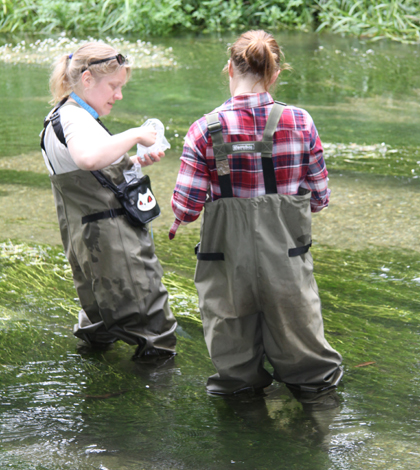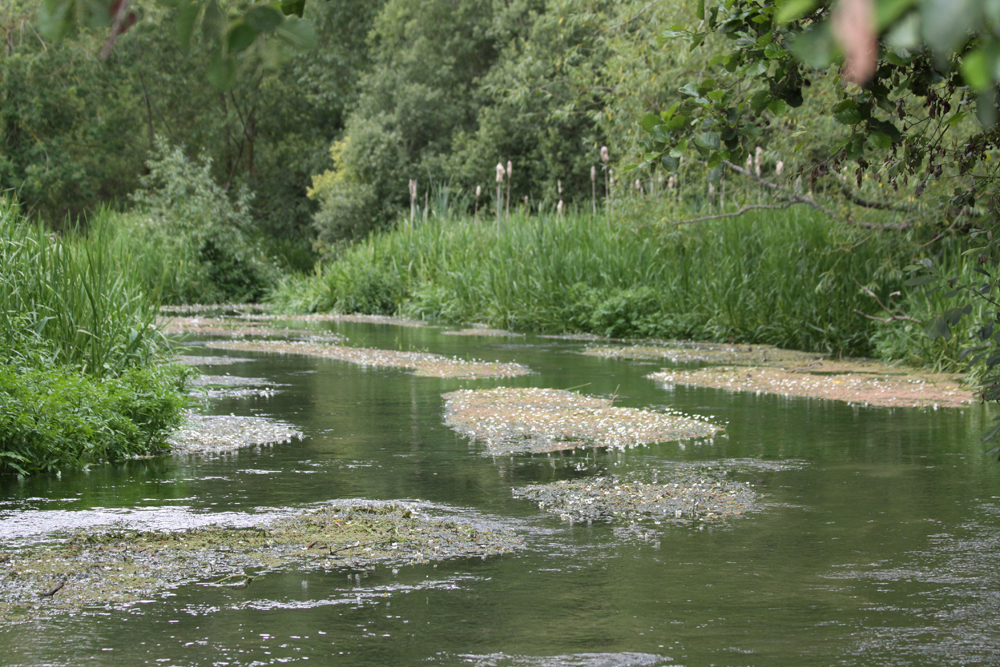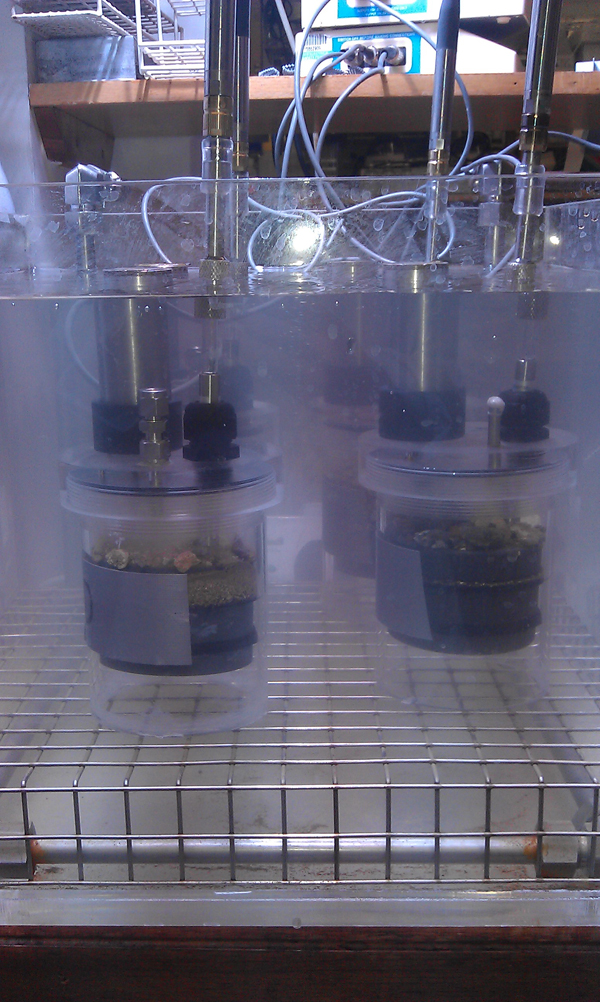Study reveals English chalk streams’ effects on methane, carbon cycles

Shelley with a student collecting water gas samples in the river Lambourn. (Credit: Felicity Shelley)
As concerns grow over greenhouse gas emissions and global climate change, carbon sequestration has gained attention from scientists around the world. Freshwater waterways play both the role of carbon sink and carbon producer, making them an important point of study for the development of climate models.
Streams and rivers have long been thought to obtain carbon through photosynthesis alone. But a new study from the Queen Mary University of London shows that methane oxidation — known also as methanotrophy — contributes a significant amount of carbon, even in well-illuminated waterways where photosynthesis should occur.
Earlier research suggested that this process was significant only in lightless ecosystems like deep sea methane vents or very deep lakes.
The study surveyed chalk streams and rivers across southern England. Researchers took water and sediment samples to measure methane concentration, methanotrophy and photosynthesis. Further efforts examined the effects of varied light intensity on photosynthesis. In doing so, the researchers hoped to learn when, how and under which conditions rivers retain or emit carbon.
Felicity Shelley, a biogeochemist at Queen Mary University of London, certainly didn’t mind traveling to the River Lambourn and other waterways to conduct the study.
“The countryside is stunning, so it was always a nice escape,” Shelley said. “We met lots of fly fishermen, farmers and dog walkers along the way. Most people seemed concerned that there might be methane in their local river, so we had to explain how it’s completely natural, odourless and actually could be fuelling more life in the riverbed.”

River Lambourn in July 2011 (Credit: Felicity Shelley)
At high concentrations, methane is highly flammable and explosive. But at low levels — as it naturally occurs in the gravel beds of chalk streams — it is harmless and even beneficial. Microorganisms and accumulated organic matter in river substrate can convert methane into carbon as deep as 35 centimeters beneath the riverbed. Some of that carbon is used by other organisms, such as caddisfly larvae and mayflies, to obtain energy. By converting methane into usable carbon, rivers help delay the escape of both chemicals into the atmosphere while contributing to biomass.
At each of the 15 rivers, Shelley collected sediment cores and split them into depth intervals. Over the next few days, she measured rates of methane oxidation and photosynthesis in the lab.
Shelley and her team found that methanotrophy is far more important to rivers’ carbon uptake than once believed. It’s especially true in the summer when carbon escapes too quickly for photosynthesis to be effective — even in well-lit conditions. That wasn’t the only surprise, however. The researchers also observed that bacteria respond to increased methane concentrations by oxidizing it more quickly.
The effect, Shelley said, “has quite exciting consequences for future climate change scenarios.” Methanotrophic bacteria can reduce the transfer of methane out of the water, oxidizing the gas before it diffuses into the atmosphere. Shelley noted that this effect could be amplified in highly turbid waterways such as rivers, which have been historically underrepresented in carbon cycle models.

Potential photosynthesis incubations: Four gas tight chambers in a chilled water bath with electrodes and underwater meter logging the changing oxygen concentrations. (Credit: Felicity Shelley)
The study’s only challenge was time, Shelley said. “Landowners were generally very happy to let me pop in their river for 15 minutes, which is all it takes for the surface sediment and water sampling.” But laboratory sessions took much longer, she said, particularly when converting methane and oxygen cycling rates into photosynthetic and methanotrophic production models.
Shelley said she hopes that her work will inspire other scientists to reconsider their views on the carbon and methane cycles. As the scientific understanding of these processes improve, so too will humanity’s ability to mitigate greenhouse gases from source to sink.
“It’s all too easy to disregard rivers as too complicated or too small to contribute to carbon cycling,” she said. “But there is mounting evidence that they are actually very important in linking terrestrial carbon with the atmosphere as well as the oceans.”
Top image: Shelley with a student collecting water gas samples in the River Lambourn. (Credit: Felicity Shelley)





0 comments